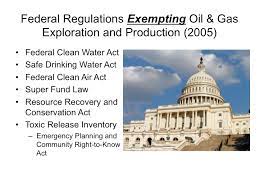From an Article by Vivian Underhill, et. al., Environmental Pollution, November 8, 2022
Hydraulic fracturing (fracking) has enabled the United States to lead the world in gas and oil production over the past decade; 17.6 million Americans now live within a mile of a fracked oil or gas well. This major expansion in fossil fuel production is possible in part due to the 2005 Energy Policy Act and its “Halliburton Loophole,” which exempts fracking activity from regulation under the Safe Drinking Water Act (SDWA).
To begin quantifying the environmental and economic impacts of this loophole, this study undertakes an aggregate analysis of chemicals that would otherwise be regulated by SDWA within FracFocus, an industry-sponsored fracking disclosure database.
This paper quantifies the total disclosures and total mass of these chemicals used between 2014-2021, examines trends in their use, and investigates which companies most use and supply them. We find that 28 SDWA-regulated chemicals are reported in FracFocus, and 60-80% of all disclosures (depending on year) report at least one SDWA-regulated chemical. Of these, 19,700 disclosures report using SDWA-regulated chemicals in masses that exceed their reportable quantities as defined under the Comprehensive Environmental Response, Compensation, and Liability Act (CERCLA).
Finally, while the most common direct-supplier category is “company name not reported,” Halliburton is the second-most named direct supplier of SWDA regulated chemicals. Halliburton is also the supplier most frequently associated with fracks that use SDWA regulated chemicals.
These results show the necessity of a more robust and federally mandated disclosure system and suggest the importance of revisiting exemptions such as the Halliburton Loophole.
See access to the full Publication here:
https://www.sciencedirect.com/science/article/abs/pii/S0269749122017663

